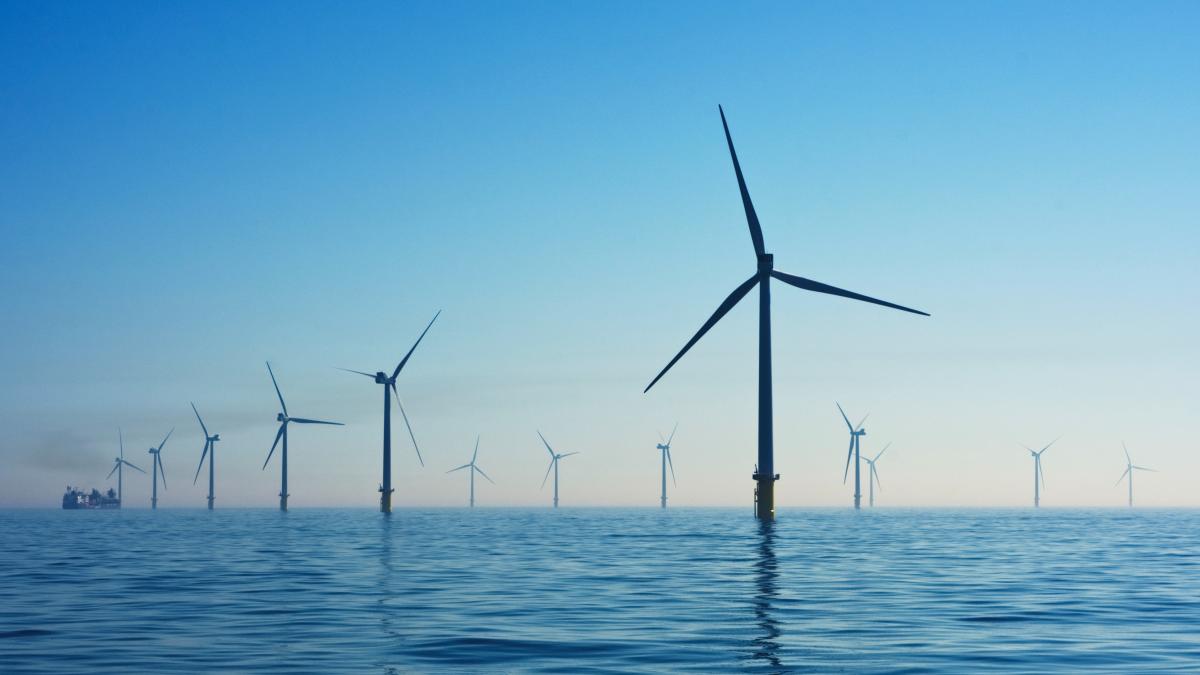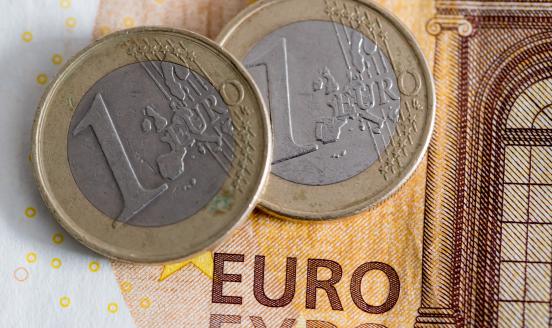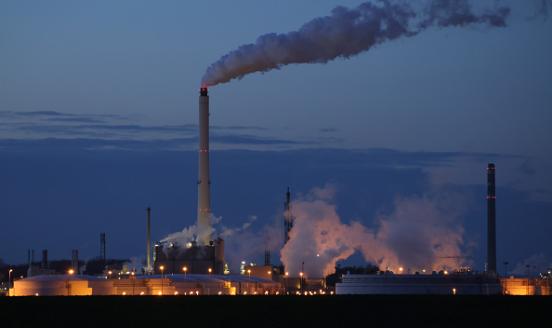Carbon price floors: an addition to the European Green Deal arsenal
As the European Union sets out a more ambitious climate policy, carbon price floors provide an opportunity to place greater emphasis on altering expec

This year will be decisive for Europe’s climate policy, with a wide range of new legislation promised to align current EU climate and energy policies with a new emissions reduction target of 55% by 2030. The reform of the backbone of the EU climate policy architecture, carbon pricing, will be of fundamental importance. This will entail reform of the emissions trading system (ETS) and the Energy Taxation Directive (ETD).
One tool currently missing from the European Green Deal arsenal is a carbon price floor, which can set a minimum carbon pricing in both ETS and non-ETS sectors. After years of discussions, the time for its introduction might now have come.
Understanding the rules, their intentions and shortcomings
The ETS is the EU’s main carbon pricing tool and covers emissions from the power generation sector, industry and intra-European flights, amounting to about 40% of total EU emissions. It is a cap-and-trade system. A quantity cap of allowances is set and distributed to participants, including through auctions. However, there the risk of carbon leakage, of firms moving their activities to countries with laxer climate rule to control costs, remains. Carbon leakage distorts the trading system and is counterproductive to the process of reducing emissions. This risk can be avoided by giving some ETS allowances for free.
Also, the system is designed so that the quantity of allowances reduces in a steady and predictable manner (known as the linear reduction factor). Auction prices are determined by the quantity offered at any given time and the level of demand. Since 2009, a combination of factors (economic crisis and high imports of international credits) has led to a surplus of allowances, which ultimately resulted in a prolonged period of lower carbon prices (from €20-€25/tonne of carbon dioxide from 2005 to 2008, to €10-€15 between 2009 and 2011, and €5-€10 between 2012 and 2018).
A Market Stability Reserve was introduced to address this excess-supply. This is an adjustment system that automatically cuts auction volumes when the surplus of allowances exceeds a certain limit and releases the volume of allowances to be auctioned when the surplus falls. Since the system started in 2019, the carbon price has risen to the current level of around €40.
However, carbon prices will have to keep rising if they are to contribute materially to EU decarbonisation. It is of course difficult to identify a ‘target’ price, but there have been attempts to identify the level of pricing that can cause behavioural change. The Stiglitz-Stern High-Level Commission on Carbon Prices, for example, concluded that the carbon price should be between $40-$80 in 2020 and then between $50-$100 in 2030 if it is to reduce emissions.
The current EU price thus remains too low to reduce emissions in a manner consistent with EU climate objectives. Within the ETS, there are two ways that could be used to engineer the desired reduction in emissions.
The first is to speed-up the reduction of emission permits allocated for free. Manufacturing installations received 80% of their allowances for free in 2013 compared to 30% in 2020. However, sectors identified as at significant risk of carbon leakage continue to receive 100% of their allocation for free. This is inconsistent with the objective of ETS and puts a downward pressure on the price. The risk of carbon leakage should not be dealt with through the ETS but by the introduction of carbon border levies. This shift in policy tools to deal with the competitiveness aspect of carbon pricing would avoid domestic carbon market distortions, while ensuring a level playing field with international competitors.
The second way is to increase the ETS’s linear reduction factor – the amount by which the quantity cap is tightened each year. The current annual rate of tightening is 2.2% up to 2030, which is consistent with the EU’s previously agreed emissions reduction target of 40% compared to 1990 levels. But the EU will soon adopt its new emissions reduction target of at least 55%, as part of the EU’s updated commitment to the Paris Agreement. This will require a further increase in the ETS’s linear reduction factor.
The EU should therefore adjust its two main levers in 2021: free ETS allowances and the linear reduction factor to control the supply of emission allowances. However, if the EU wants to accelerate the necessary increase in the price of emissions, a carbon price floor can be a third tool. The main advantage of the price floor is that it is transparent and predictable, and helps investors and consumers to make a sustainable shift to low-carbon solutions. This is particularly relevant when considering the wave of forthcoming investment in response to the COVID-19 economic crisis.
Carbon price floors as an additional instrument
Carbon price floors, below which trading is not permitted, are increasingly being used to make carbon pricing a strong driver of decarbonisation. If done credibly, the price floor can increase gradually to establish a carbon price that is consistent with climate targets.
However, the problem with carbon price floors is enforceability. How can the announcement of a reserve price by itself guarantee market creation? This is particularly relevant as market participants have an ex-ante incentive to tacitly collude to lower prices. This system can easily prevent the market from being created altogether.
In recognition of this shortcoming, many systems resort to taxing emissions rather than having a trading scheme. It is simple, it can be predictable and is legally enforceable. However, taxation is also not without problems: a levy does not guarantee the ultimate goal of a reduction in emissions and when part of broader taxation policies, it is subject to political pressure. This jeopardises predictability and is the main reason why businesses themselves prefer trading schemes, arguing that permits amount to property rights that are crucial for investment decisions. In reality, about one-fifth of the world’s emissions fall under such schemes.
Country experiences with price floors provide us with useful insights. The United Kingdom has had a Carbon Price Floor (CPF) since 2013. The CPF consists of two components which are paid for by energy generators in two different ways: (i) The EU ETS allowance price; and (ii) the Carbon Support Price (CPS), which tops up the EU ETS allowance price, if that price is lower than the carbon price floor target.
When introduced, the intention was for the CPF to increase each year in order to reach £30/tonne CO2 by 2020. However, price freezes have capped the floor price at £18 since 2016 to limit the competitive disadvantage faced by companies and reduce final energy bills.
A similar scheme was considered in the Netherlands in 2019 for power generation plants covered by the ETS. A carbon price floor was to be set at €12.30/tonne CO2 in 2020, and then progressively increase to €31.90 by 2030. In this system, should the ETS price fall below this minimum price, the difference will be charged in the form of a national carbon tax. The Dutch proposal was delayed as a result of COVID-19, and it is still unclear when it will finally be introduced.
The Dutch government has also included in its 2021 budget a legislative proposal for a carbon price floor on industrial installations. The price floor is set to work in a similar way to that proposed for power generation, with a price of €30 proposed for 2020. The effective Dutch tax will then be whatever the difference is between the ETS price and €30. This floor price is expected to increase to €125 by 2030.
In both the UK and Dutch cases, automatic top-ups ensure the minimum carbon price is credible. Such systems provide clarity about the trajectory of minimum carbon prices and something similar at EU level could prove a very effective weapon in the decarbonisation arsenal. An ETS price floor should ideally be introduced EU-wide because national measures can lead to arbitrage between countries that, like carbon leakage, could be distortive and ultimately counterproductive.
However, EU-wide implementation might require a unanimous decision of all EU countries (though some claim qualified majority voting would be sufficient), and might thus be vetoed by more carbon-intensive countries. The solution to this political economy problem lies in the redistribution of carbon revenues: allocating part of the carbon revenues accrued as a result of ETS reform to fund just-transition programmes in carbon-intensive countries. Failing that, an ETS price floor could be introduced by a coalition of countries.
Beyond ETS
It is important to remember that the ETS currently only covers 40% of total EU emissions. The remaining 60%, including from transport, buildings and agriculture, are currently not subject to EU-wide carbon pricing, but only subject to EU-wide minimum rates for energy taxes, set by the Energy Taxation Directive (ETD).
Proposals to reform the ETD will be made in 2021 and the EU could also introduce carbon price floors here. This is particularly relevant as a number of sectors under the ETD are particularly exposed to significant uncertainty linked to global energy markets. This is why the COVID-19 induced collapse in oil prices in 2020 led to a French position paper calling for a carbon price floor as a safeguard against a drop of fossil-fuel prices. Moreover, as argued for ETS, a carbon price floor would provide clarity and foster low-carbon investment in sectors under the ETD.
Germany has already implemented a framework in 2019, in which the carbon price in the transport and building heating sectors will rise to €30 in 2022, €35 in 2023, €45 in 2024 and €55 in 2025, while emission certificates with a price corridor of €55-€65 per unit will be auctioned from 2026.
A similar scheme has already been successfully implemented in British Columbia in Canada, where a CAN $10 carbon tax was introduced in 2008, in tandem with clear upfront communication that this would increase by CAN $5 a year to CAN $30 in 2013. In 2018, the Canadian government replicated this successful scheme at the federal level, starting at CAN $20 in 2019 and with a plan to reach CAN $50 by 2022. In this system, provinces are given the flexibility to opt for their preferred pricing system, but are required to impose the federal minimum price.
For the European Green Deal to succeed, the EU should place greater emphasis on altering expectations credibly, so that market agents anticipate today higher future pay-offs from low-carbon investment. Carbon price floors can be very effective in this regard, both within the ETS and in non-ETS sectors.
Research assistance from Ben McWilliams is gratefully acknowledged.
Recommended citation:
Demertzis M. and S. Tagliapietra, (2021) ‘Carbon price floors: an addition to the European Green Deal arsenal’ Bruegel Blog, 4 March



